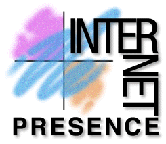


 ACCESS PROVIDER:
ACCESS PROVIDER: An Access Provider provides access to the Internet. A few of the most popular Access Providers are: America On Line, CompuServe and Prodigy. In addition to Internet Access, the aforementioned providers offer many information services and email. For this package of services, the subscriber is generally charged a fixed hourly fee for the time connected to the service.
Another type of Access Provider provides Internet Access only. The advantage of Internet Only providers is generally a reduced hourly fee. The disadvantage is not having all of the on-line services organized at your fingertips.
 FTP:
FTP: "File Transfer Protocol. A protocol defining how files are transferred from one computer to another. FTP is also the name of a program used to move files. And FTP can be used as a verb (often in lowercase) to describe the procedure of using FTP. As in, 'ftp to ftp.demon.co.uk,' or 'I ftp'ed to their system and grabbed the file.'"
Kent, Peter. The complete idiot's guide to the internet., 2nd edition. © 1994 Alpha Books. Indianapolis, IN, pg. 351.
Anonymous FTP: A system by which members of the Internet "public" can access files at certain FTP sites without needing a login name -- they simply login as anonymous."
Ibid. pg. 347.
 HTTP:
HTTP: Hypertext Transfer Protocol. "Hypertext: A system in which documents contain links that allow readers to move between areas of the document, following subjects of interest in a variety of different paths. The World Wide Web is a hypertext system."
Ibid. pg. 352.
 IP:
IP: "Internet Protocol. The standard protocol used by systems communicating across the Internet. Other protocols are used, but the Internet Protocol is the most important one."
Ibid. pg. 353.
 SERVER:
SERVER: "A program or computer that 'services' another program or computer (the client). For instance, a Gopher server program sends information from its indexes to a Gopher client program." Internet Presence offers both FTP and HTTP servers for complete accessability.
Ibid. pg. 353.
 T1 LINES:
T1 LINES:
A T1 line is a digital transmission link with a capacity of 1.544
Mbps (1,544,000 bits per second). T1 is a standard for digital
transmission in North America. It is usually provided by the phone
company and used for connecting networks across remote distances.
Bridges and routers are used to connect LANs over T1 networks.
Internet Presence maintains a T1 connection between its servers
and NETCOM, the backbone of the Internet.
 TELNET:
TELNET: "A program that lets Internet users log into computers other than their own host computers, often on the other side of the world. Telnet is also used as a verb, as in 'telnet to debra.doc.ca.'"
Ibid. pg. 358.
 TELNETING:
TELNETING: "Internet-speak for using Telnet to access a computer on the network."
 WORLD WIDE WEB:
WORLD WIDE WEB:
"A hypertext (http) system allows users to 'travel through' linked documents, following any chosen route. World Wide Web documents contain topics that, when selected, lead to other documents."
Ibid. pg. 360.
The Internet is a revolutionary innovation which provides instant access to information and marketing resources worldwide. It is commonly referred to as "the information superhighway".

 HOME
HOME